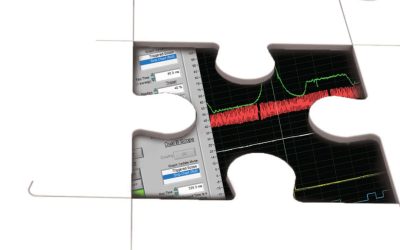By Tony Molla, VP Communications
As the modern automobile becomes more complex and less understood, professional credentials are growing in importance in the minds of consumers. Although most can’t tell you what the acronym means, ASE certification is something they look for when choosing a repair shop.
Shop owners are increasingly recognizing ASE certification as an excellent measure of both shop and individual technician capability. That’s as it should be, because the reason ASE was founded was to provide an independent assessment of a technician’s technical knowledge. Others report that encouraging technicians to obtain voluntary ASE certification not only increases their value to the company, it also increases their value to themselves by building self-confidence. Achieving ASE certification provides a badge of accomplishment, commitment and professionalism that everyone can readily identify.
The biggest challenge any competent technician faces when taking an ASE test is fear—fear of taking a test—ANY test—and fear of the unknown. So, how do you maximize your chances of passing? The answer is simple: preparation. Once you understand how ASE testing works, a lot of that fear will evaporate.
One important fact is that ASE tests are specifically designed to test real-world knowledge. How do ASE test questions parallel the “real world†of vehicle diagnosis and repair? Most people reason “cause and effect†relationships in every day life. In doing so, we typically weigh our actions against certain circumstances and attempt to determine the effect that will result.
The four options provided as answer choices for each question represent possible “causes†for the concern. Each option represents a plausible choice; however, only one option is correct based upon fundamental technical reasons. Similarly, the incorrect options are disqualified based upon fundamental technical reasons. Technicians must apply their knowledge of the subject, and select the option that they determine is the cause for the outlined concern. Test question content, in this format, tests a technician’s knowledge of the skills necessary for competent job performance, which is the foundation for earning the ASE credential. It’s also important to know that the questions are created in workshops made up of working professionals, including technicians. So, it’s really your peers who are defining what knowledge is relevant for testing.
Now that you understand where the questions come from, how can you actually prepare to take ASE tests? One of the best ways to start is to download a free copy of The Official ASE Catalog of Tests for each certification test series from the ASE website at www.ase.com. The ASE Catalog of Tests will help you become familiar with test content and question format. The Test Specifications in this booklet contain a summary description of the content covered by each test. If you are an experienced and competent technician, a careful review of this booklet, and additional brush-up on those areas in which you are weakest, is all you should need to pass the ASE tests.
ASE also recommends that you do a self-evaluation of your knowledge in your desired certification area(s). The best way to do that is to read through each of the tests’ task lists separately and determine whether or not you know what is involved in performing each diagnostic or repair procedure. This evaluation requires you to be honest with yourself about what you know and don’t know, but will help you determine what level, and/or type, of study material is needed for you to enhance your knowledge, and help you to achieve your professional goals. Your self-evaluation may reveal that the best way for you to prepare to take an ASE test is to actually attend technical training. Many training providers use the ASE task lists as a reference when creating their course materials, which results in excellent preparation courses.
Once the test has begun, keep track of time. Do not spend too long on any one question. If a question is difficult, mark the answer that you think is correct and put a check by it in the test book. Then go on to the next question. If you finish before the allotted time, you may go back to the questions that you checked. It is to your advantage to answer every question. Do not leave any answers blank. Your score will be based on the number of correct answers that you give.
Applying some common sense will help maximize your chances of success. It’s important to be alert and well-rested when taking any kind of test. Try to get a good night’s sleep the day before the testing and avoid working a heavy day just before heading off to the test center. Eat a good dinner, but don’t overeat, and avoid the consumption of alcohol. Speaking from experience, it’s also important not to overdo the coffee just before taking the test. Too much caffeine will make you jittery and four hours is a long time to go between pit stops, if you know what I mean. Good luck on the test!




0 Comments